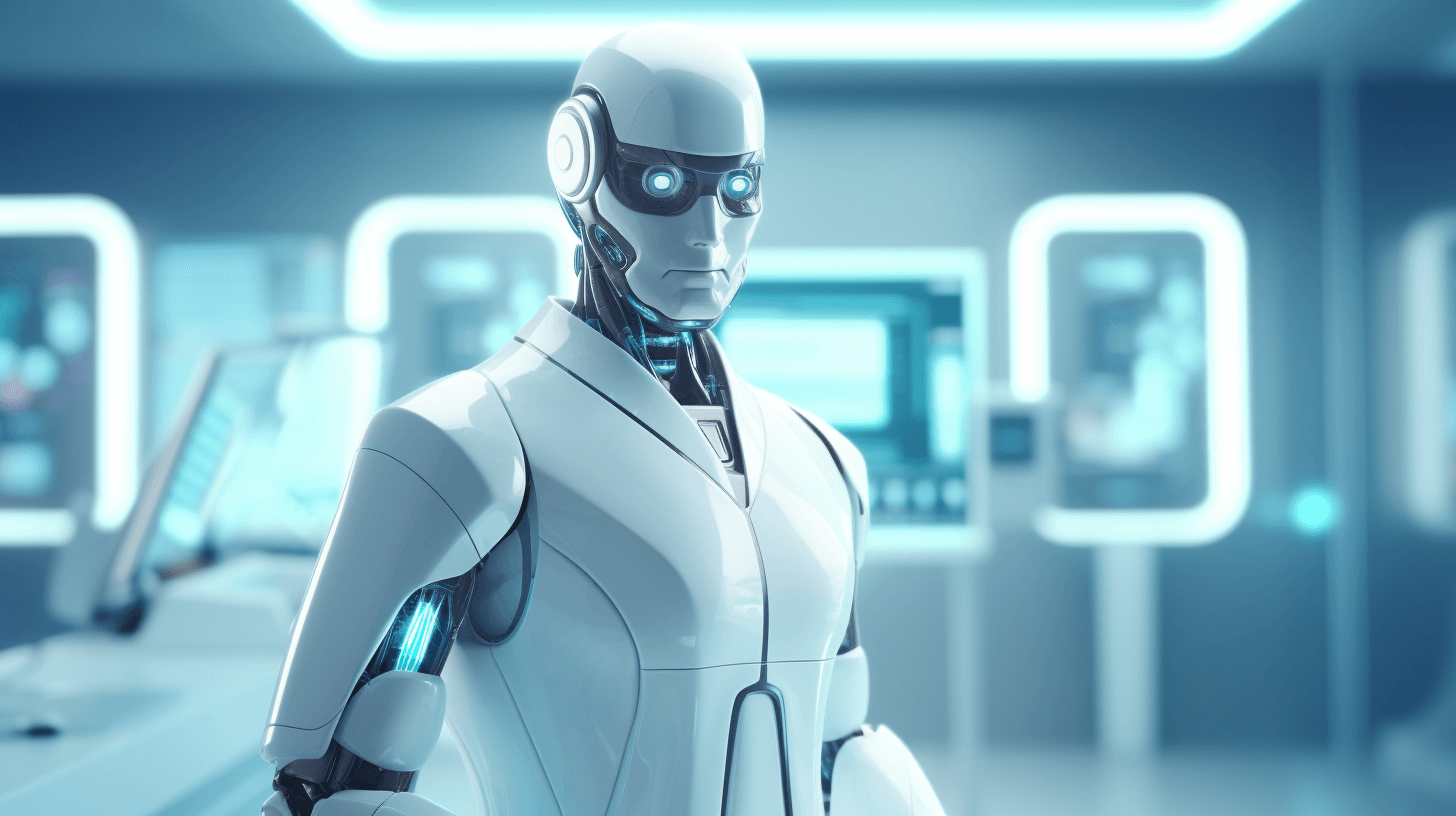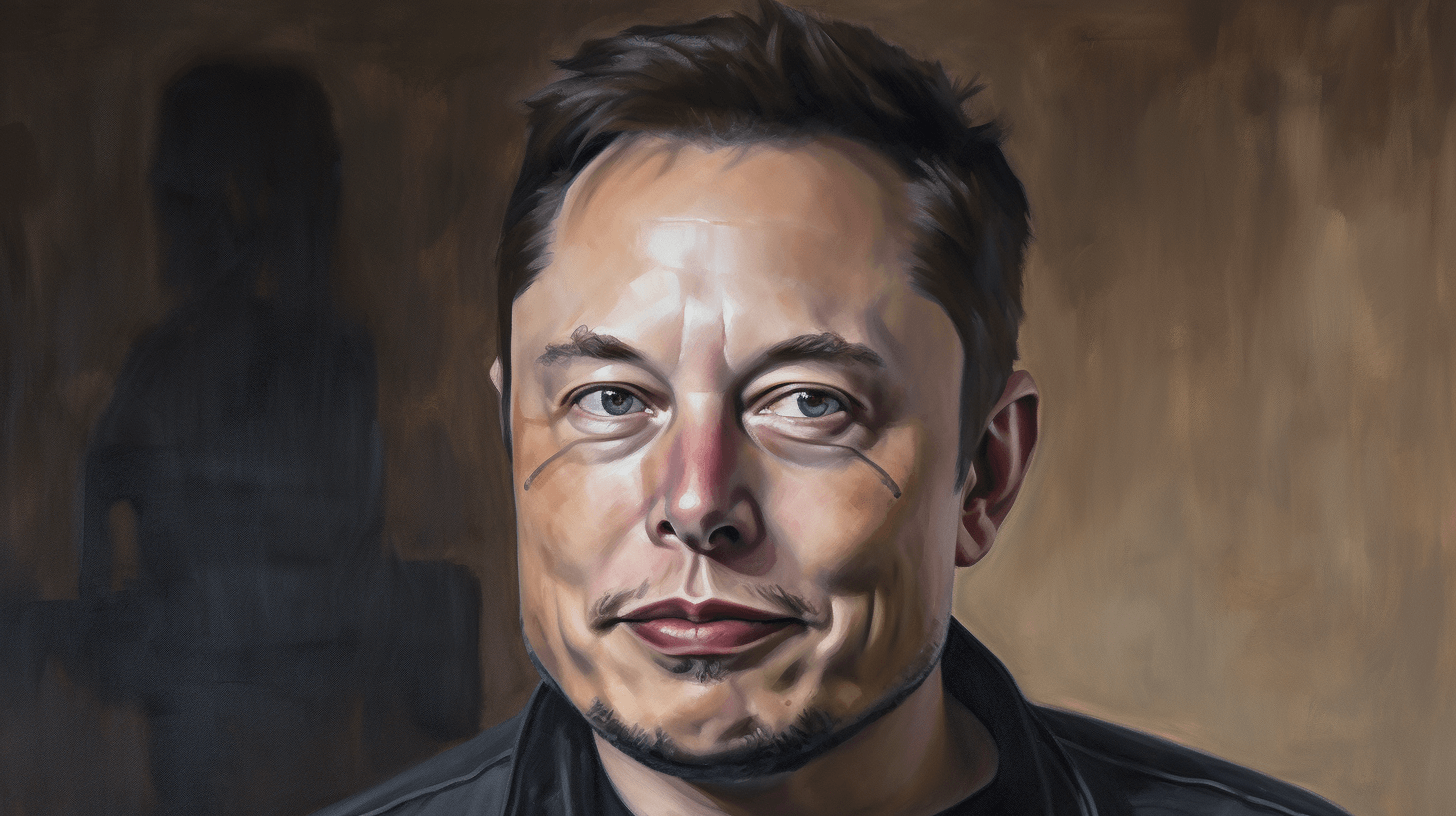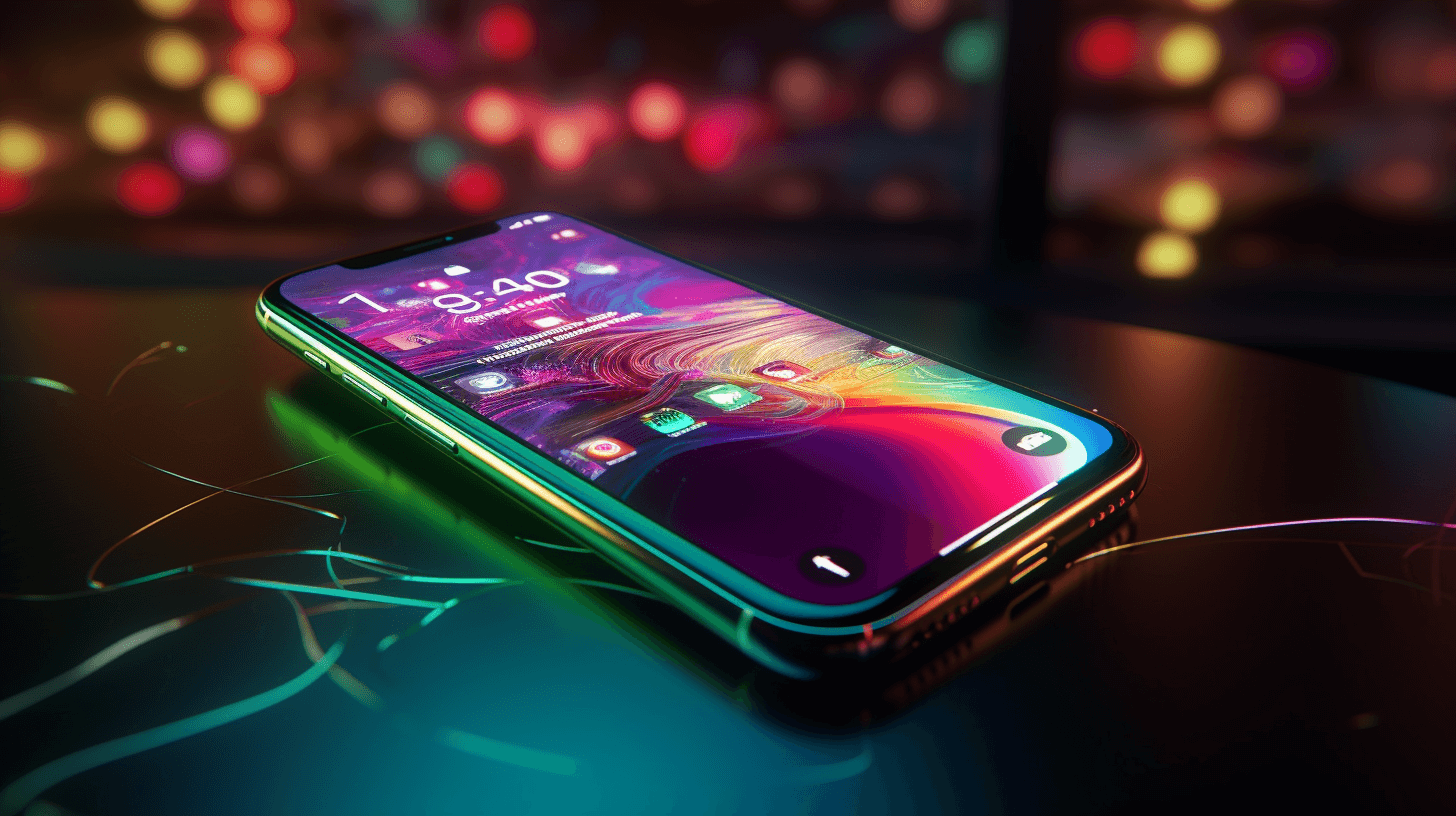🤖💼 Da A.I. Going Help Doctors Wit’ Medical Paperwork
⬇️ Pidgin | ⬇️ ⬇️ English
Da best use fo’ generative A.I. in health care, doctors say, is fo’ make da heavy burden of documentation mo’ easy, ’cause das taking dem hours a day and adding to da burnout. Dr. Matthew Hitchcock, one family physician from Chattanooga, Tenn., get one A.I. helper.
Da ting records da patient visits on top his smartphone and sum up da notes fo’ treatment plans and billing. He do some light editing on top wateva da A.I. produce, and in about 20 minutes, he pau wit’ his patient visit documentation fo’ da day.
Dr. Hitchcock used to spend like two whole hours typing up da medical notes afta his four children wen’ sleep. “Dat stay all past now,” he say. “It’s pretty awesome.” 👨⚕️📱💬
ChatGPT-style artificial intelligence stay coming into health care, and da big dream of wassum it can bring stay one big inspiration. Everybody stay predicting dat all doctors goin’ get one superintelligent sidekick, giving suggestions fo’ improve care.
But fo’ now, da new A.I. in health care stay goin’ be mo’ like one hardworking assistant than one genius partner. Da main target stay fo’ ease da heavy load of digital paperwork dat da doctors gotta produce, typing long notes into electronic medical records, so das stay necessary fo’ treatment, billing, and administrative purposes. Fo’ now, da new A.I. in health care stay goin’ be like one dedicated secretary. 💼🤖💪
From da leaders at da major medical centers to da family physicians, everybody stay optimistic dat health care goin’ benefit from da latest advances in generative A.I. — da technology dat can create everyting from poetry to computer programs, and often get da same level of fluency as one human.
But doctors stay emphasizing dat medicine stay not one wide open playground fo’ experiment. Da A.I. stay get da tendency fo’ sometimes create fake tings, or what dey call hallucinations. Das might be funny, but no can have dat kine tings in da high-stakes world of health care.
Dey say dat’s why generative A.I. stay way different from da A.I. algorithms dat already stay approved by Da Food and Drug Administration fo’ specific tings, like scanning medical images fo’ cell clusters or small patterns dat might mean da person get lung or breast cancer. Doctors stay also using chatbots fo’ communicate mo’ effectively wit’ some patients. 💡🏥🧠
Doctors and medical researchers stay saying dat da uncertainty about regulations, along wit’ concerns about patient safety and lawsuits, goin’ slow down da acceptance of generative A.I. in health care, especially when it come to diagnosis and treatment plans. Da doctors who wen’ try out dis new technology, though, say dat da performance stay way betta in da last year. And da medical note software stay designed so da doctors can check da A.I.-generated summaries wit’ da words spoken during da patient’s visit, so das stay can be verified and build trust.
“Right now, we gotta choose carefully how we use dis,” Dr. John Halamka, da president of Mayo Clinic Platform, said. “Just reducing da documentation burden by itself would be one huge win.” 🤔📝💼
Recent studies showing dat doctors and nurses stay feeling burned out, and dat stay making plenny of dem quit da profession. One big complaint, especially from da primary care doctors, stay how much time dey gotta spend on top documentation fo’ da electronic health records. Dey gotta do dat work even afta office hours, and da doctors calling dat “pajama time.” 😫⏰💤
Experts stay saying dat generative A.I. could be da promising weapon to combat da physician workload crisis.
“This technology is rapidly improving at a time health care needs help,” said Dr. Adam Landman, chief information officer of Mass General Brigham, which includes Massachusetts General Hospital and Brigham and Women’s Hospital in Boston. For years, doctors have used various kinds of documentation assistance, including speech recognition software and human transcribers. But the latest A.I. is doing far more: summarizing, organizing and tagging the conversation between a doctor and a patient.
Companies developing this kind of technology include Abridge, Ambience Healthcare, Augmedix, Nuance, which is part of Microsoft, and Suki.
Ten physicians at the University of Kansas Medical Center have been using generative A.I. software for the last two months, said Dr. Gregory Ator, an ear, nose and throat specialist and the center’s chief medical informatics officer. The medical center plans to eventually make the software available to its 2,200 physicians. 🏥💻👩⚕️
But the Kansas health system is steering clear of using generative A.I. in diagnosis, concerned that its recommendations may be unreliable and that its reasoning is not transparent. “In medicine, we can’t tolerate hallucinations,” Dr. Ator said. “And we don’t like black boxes.”
The University of Pittsburgh Medical Center has been a test bed for Abridge, a start-up led and co-founded by Dr. Shivdev Rao, a practicing cardiologist who was also an executive at the medical center’s venture arm.
Abridge was founded in 2018, when large language models, the technology engine for generative A.I., emerged. The technology, Dr. Rao said, opened a door to an automated solution to the clerical overload in health care, which he saw around him, even for his own father.
“My dad retired early,” Dr. Rao said. “He just couldn’t type fast enough.”
Today, the Abridge software is used by more than 1,000 physicians in the University of Pittsburgh medical system.
Dr. Michelle Thompson, a family physician in Hermitage, Pa., who specializes in lifestyle and integrative care, said the software had freed up nearly two hours in her day. Now, she has time to do a yoga class, or to linger over a sit-down family dinner. 🕊️🥗👨👩👧👦
Another benefit has been to improve the experience of the patient visit, Dr. Thompson said. There is no longer typing, note-taking or other distractions. She simply asks patients for permission to record their conversation on her phone.
“A.I. has allowed me, as a physician, to be 100 percent present for my patients,” she said.
The A.I. tool, Dr. Thompson added, has also helped patients become more engaged in their own care. Immediately after a visit, the patient receives a summary, accessible through the University of Pittsburgh medical system’s online portal.
The software translates any medical terminology into plain English at about a fourth-grade reading level. It also provides a recording of the visit with “medical moments” color-coded for medications, procedures, and diagnoses. The patient can click on a colored tag and listen to a portion of the conversation.
Studies show that patients forget up to 80 percent of what physicians and nurses say during visits. The recorded and A.I.-generated summary of the visit, Dr. Thompson said, is a resource her patients can return to for reminders to take medications, exercise, or schedule follow-up visits.
After the appointment, physicians receive a clinical note summary to review. There are links back to the transcript of the doctor-patient conversation, so the A.I.’s work can be checked and verified. “That has really helped me build trust in the A.I.,” Dr. Thompson said.
In Tennessee, Dr. Hitchcock, who also uses Abridge software, has read the reports of ChatGPT scoring high marks on standard medical tests and heard the predictions that digital doctors will improve care and solve staffing shortages.
Dr. Hitchcock has tried ChatGPT and is impressed. But he would never think of loading a patient record into the chatbot and asking for a diagnosis, for legal, regulatory, and practical reasons. For now, he is grateful to have his evenings free, no longer mired in the tedious digital documentation required by the American health care industry.
And he sees no technology cure for the health care staffing shortfall. “A.I. isn’t going to fix that anytime soon,” said Dr. Hitchcock, who is looking to hire another doctor for his four-physician practice. 👨⚕️💻🔎
As generative A.I. continues to advance and address concerns, it has the potential to revolutionize the way doctors approach documentation, ultimately alleviating their workload and allowing them to focus more on delivering quality care to their patients. While there are still challenges and considerations to be addressed, the integration of A.I. in health care holds promise for a more efficient and patient-centered future. 🌟🏥🚀
NOW IN ENGLISH
🤖💼 The A.I. is going to help doctors with medical paperwork.
The use of generative A.I. in health care is seen as a promising solution to alleviate the heavy burden of medical documentation that doctors face on a daily basis. Dr. Matthew Hitchcock, a family physician from Chattanooga, Tennessee, has embraced the assistance of an A.I. companion.
Using his smartphone, the A.I. records patient visits and provides summaries for treatment plans and billing. Dr. Hitchcock spends some time editing the A.I.’s output, and within approximately 20 minutes, he completes his daily patient visit documentation. Gone are the days when he would spend up to two hours typing medical notes after his children went to bed. He describes the change as “awesome.” 👨⚕️📱💬
While the vision of having superintelligent A.I. partners aiding doctors in delivering improved care is inspiring, the current focus of A.I. implementation in health care is centered around alleviating the burden of digital paperwork. Physicians spend a significant amount of time typing lengthy notes into electronic medical records for treatment, billing, and administrative purposes. At present, A.I. serves as a dedicated assistant, aiming to ease this cumbersome task. 💼🤖💪
Health care professionals, from leaders at major medical centers to family physicians, are optimistic about the potential benefits of generative A.I. in health care. Generative A.I., capable of creating everything from poetry to computer programs with human-like fluency, holds great promise. However, caution is necessary, as medicine is not an open playground for experimentation. The occasional fabrications or “hallucinations” that A.I. can create might be amusing in other fields but are unacceptable in the high-stakes realm of health care.💡🏥🧠
Generative A.I. differs significantly from A.I. algorithms already approved by the Food and Drug Administration for specific applications, such as scanning medical images for cell clusters or patterns indicating lung or breast cancer. Doctors are also using chatbots to improve communication with certain patients. The uncertain regulatory landscape, concerns about patient safety and litigation, pose challenges to the acceptance of generative A.I. in health care, particularly regarding its use in diagnosis and treatment plans. However, doctors who have embraced this technology in their practice note significant improvements in performance, and the medical note software is designed to allow doctors to verify A.I.-generated summaries against the actual conversation with patients, fostering trust.🤔📝💼
Physicians and medical researchers recognize the high levels of burnout among doctors and nurses, which leads many to leave the profession. Primary care physicians, in particular, complain about the time spent on electronic health record documentation, extending their working hours into “pajama time.” Generative A.I. has the potential to address this physician workload crisis.😫⏰💤
Dr. Adam Landman, the chief information officer of Mass General Brigham, envisions that this rapidly improving technology arrives at a time when health care is in dire need of support. While doctors have previously relied on tools such as speech recognition software and human transcribers, the latest A.I. goes beyond simple assistance, summarizing, organizing, and tagging conversations between doctors and patients.
Several companies, including Abridge, Ambience Healthcare, Augmedix, Nuance (part of Microsoft), and Suki, are developing technologies in this field. The University of Kansas Medical Center has been testing generative A.I. software with ten physicians for the past two months, with plans to expand its use to all 2,200 physicians in the center. Similarly, the University of Pittsburgh Medical Center has served as a testing ground for Abridge, a start-up founded by Dr. Shivdev Rao, a practicing cardiologist who recognized the need for an automated solution to the clerical overload in health care. Dr. Rao witnessed firsthand the challenges his father faced in typing medical records, leading to his early retirement. Today, over 1,000 physicians in the University of Pittsburgh medical system benefit from the Abridge software.🏥💻👩⚕️
However, caution remains a priority. The Kansas health system refrains from using generative A.I. in diagnosis due to concerns about reliability and lack of transparency in the A.I.’s recommendations. In the medical field, hallucinations are intolerable, and “black boxes” are not welcomed. The University of Pittsburgh Medical Center, while embracing Abridge software, understands the limitations of A.I. and the importance of human oversight.
Dr. Michelle Thompson, a family physician in Hermitage, Pennsylvania, specializing in lifestyle and integrative care, has experienced the benefits of A.I. firsthand. The software has saved her nearly two hours a day, allowing her time for personal activities like yoga or enjoying a family dinner. It has also improved the patient experience during visits, as she can focus entirely on the patient without distractions. Dr. Thompson requests permission to record conversations with her patients, and the A.I. tool translates medical terminology into plain English, providing patients with summaries accessible through the online portal. The recordings are color-coded to highlight key medical moments related to medications, procedures, and diagnoses, allowing patients to revisit important parts of the conversation. Studies show that patients often forget up to 80 percent of what physicians and nurses say during visits, making the recorded and A.I.-generated summaries valuable resources for medication reminders, exercise guidance, and scheduling follow-up visits. The software facilitates trust-building between doctors and patients, as physicians receive clinical note summaries linked to the transcript of the doctor-patient conversation, enabling verification of the A.I.’s work.🕊️🥗👨👩👧👦
Dr. Hitchcock, who also utilizes Abridge software, acknowledges the impressive performance of A.I. technology but refrains from relying on it for diagnostic purposes due to legal, regulatory, and practical reasons. Nonetheless, he appreciates the newfound freedom in his evenings, free from the burdensome digital documentation required in the American health care industry. He recognizes that A.I. alone cannot solve the staffing shortfall in health care and continues his search for another physician to join his practice.👨⚕️💻🔎
As generative A.I. continues to advance and address concerns surrounding reliability, transparency, and safety, it has the potential to revolutionize how doctors approach documentation. By alleviating the documentation burden, A.I. enables physicians to focus on delivering quality care to their patients. While challenges remain, the integration of A.I. in health care holds promise for a more efficient and patient-centered future.🌟🏥🚀







